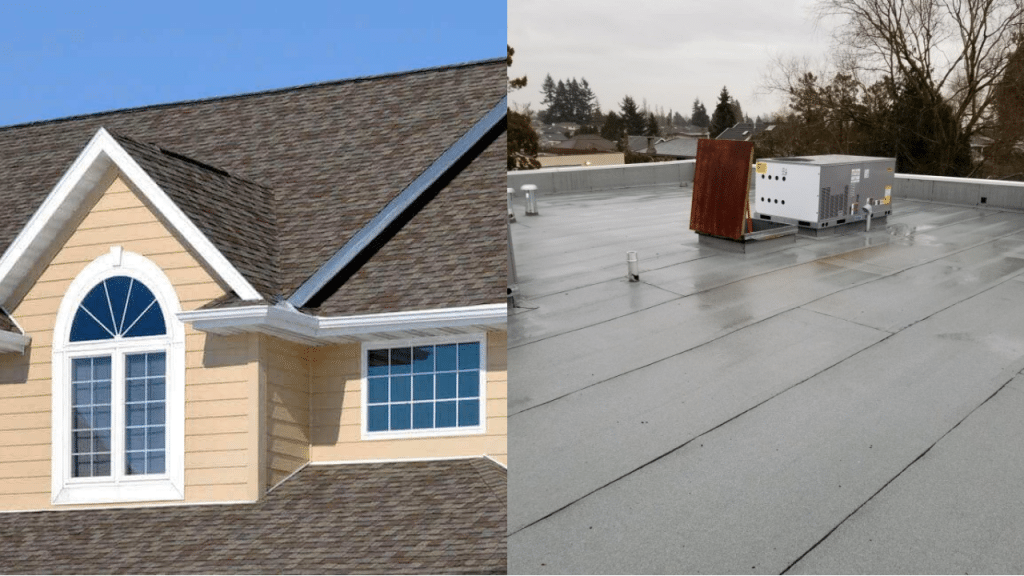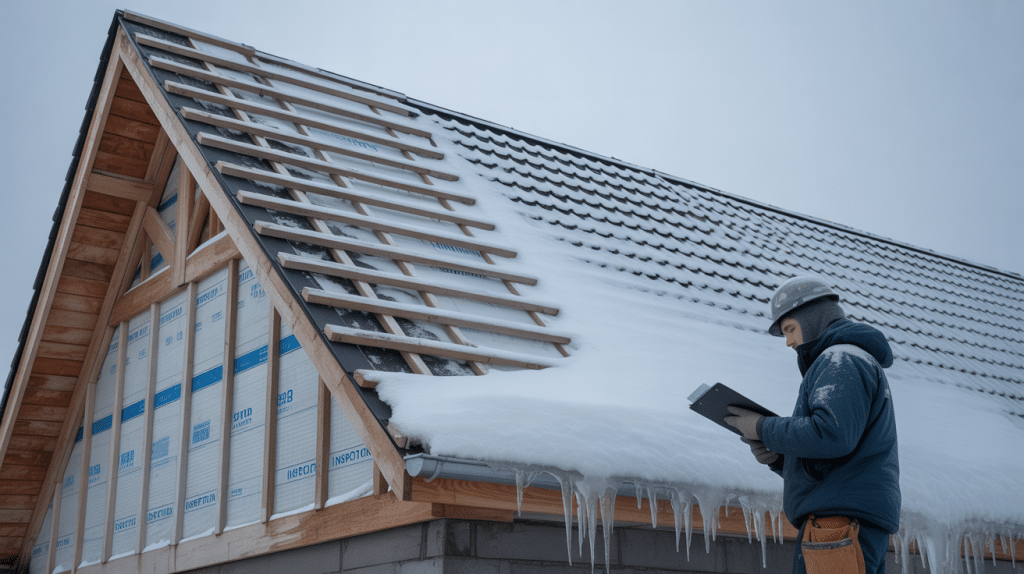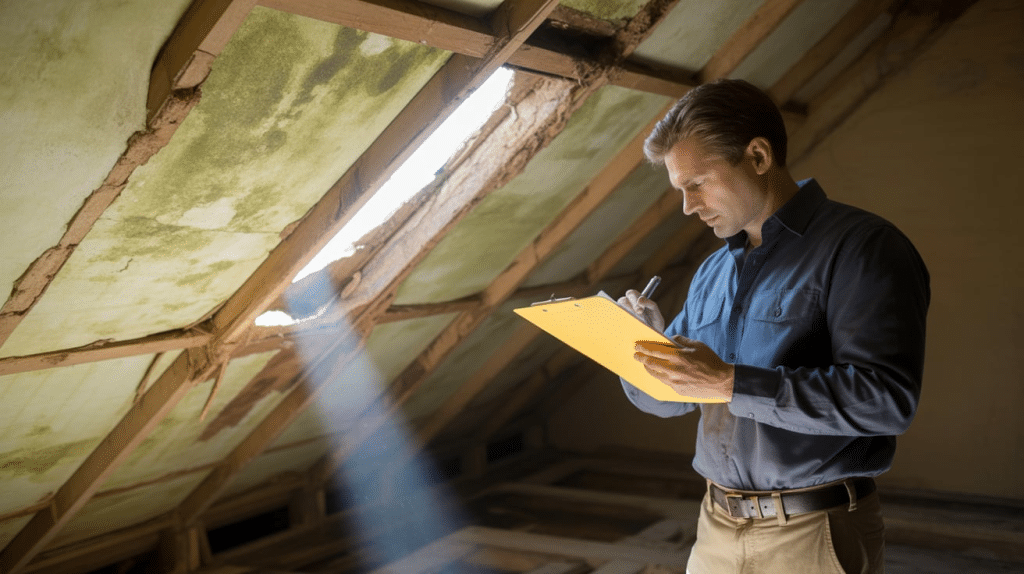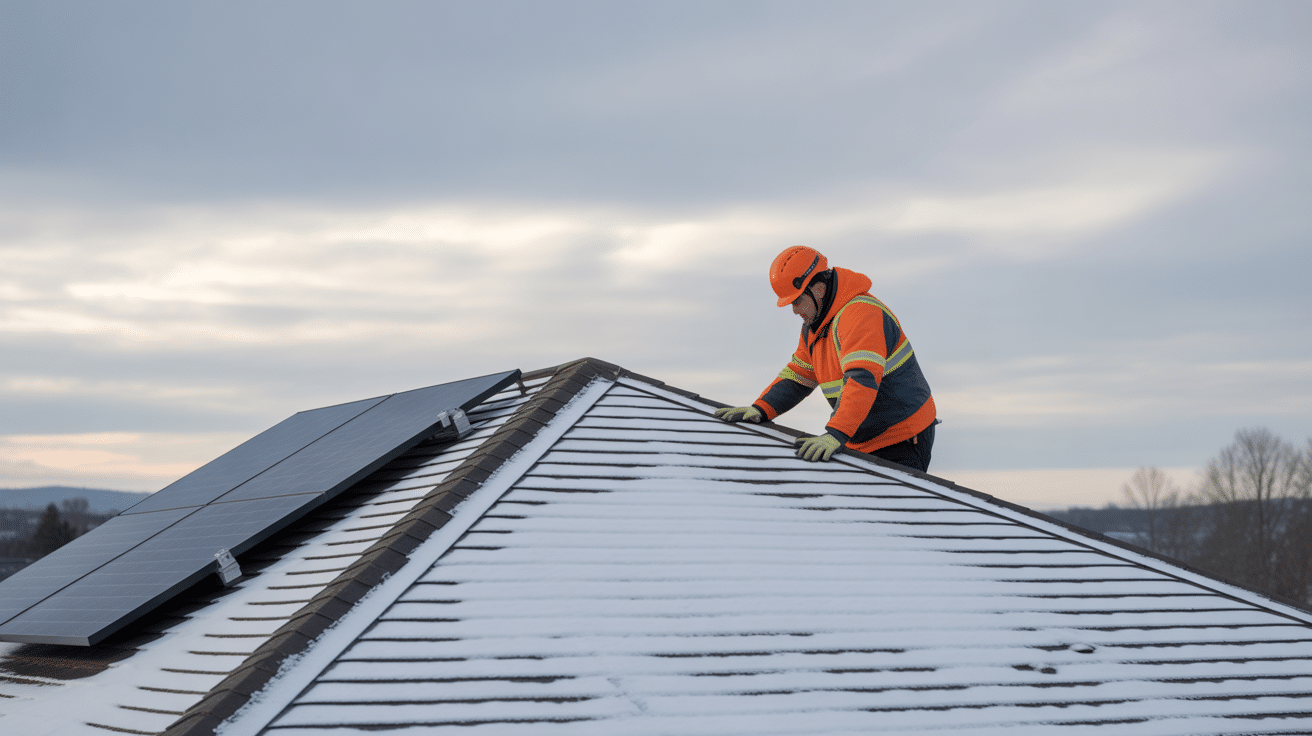Have you ever looked at your roof and questioned how much weight it can actually support?
It’s a question that matters more than most people think. Heavy snow, big storms, or even a new set of solar panels can put serious pressure up there.
Roofs look strong, but they’re not all built the same. Some can take more weight than others.
The materials, age, shape, and weather all play a role. Knowing the limits can help avoid costly repairs or worse.
This guide breaks it down in a way that’s easy to understand. From roof design to weather effects, it covers what really matters.
Why Knowing Your Roof’s Limit Can Save You Trouble
Your roof may need to hold more weight than you think. A layer of wet snow can weigh over 20 pounds per square foot. Solar panels add another 3 to 5 pounds per square foot. Even roofers or equipment during repairs can increase the load.
If the roof isn’t built to handle it, damage or collapse can happen. That’s why understanding load limits is so important.
Roofs face three main types of load: Dead Load (the roof itself), Live Load (temporary weight like people), and Environmental Load (weather-related forces).
Roofs carry different kinds of weight:
- Dead Load is the weight of the roof materials that never changes.
- Live Load includes things that come and go, like people or tools.
- Environmental Load comes from weather, like snow, rain, wind, and even plants growing on the roof.
Each type adds to the pressure your roof must support every day.
Typical Load Capacities: Residential vs. Commercial

Understanding standard roof load capacities helps determine whether a roof can safely support additional weight, such as solar panels, HVAC systems, or heavy snow.
Residential roofs are typically built to support everyday weather and occasional human access for maintenance.
They must handle permanent material weight (dead load), temporary added weight (live load), and environmental forces like snow or rain.
Commercial roofs, especially flat ones, must accommodate not only environmental and structural demands but also the added weight of HVAC units, solar arrays, and more frequent foot traffic.
These are built with more reinforcement, often including steel or concrete components.
Roof Load Capacity Comparison Table
This table compares residential and commercial roofs’ ability to support weight based on structural design, usage, and environmental demands.
| Type of Load | Residential Roof (Typical Values) | Commercial Roof (Typical Values) |
|---|---|---|
| Dead Load | 10 to 20 pounds per square foot (psf) | 20 to 35 psf (more for concrete or multi-layer systems) |
| Live Load | 20 psf (may vary by region and roof slope) | 40 psf or more, depending on access and use |
| Snow Load | 20 to 70 psf in snow-heavy regions | 30 to 100 psf, depending on climate and elevation |
| HVAC/Equipment Load | Rarely present; load must be calculated per unit | Frequently included; roofs are often designed for this purpose |
| Material Examples | Asphalt shingles, wood rafters | Concrete, steel, TPO membrane, reinforced beams |
Factors Influencing Roof Load Capacity

Understanding what affects your roof’s ability to bear weight is essential, whether adding solar panels, dealing with heavy snow, or planning a remodel.
Several factors influence how much weight your roof can safely support.
Roof Design
The shape and structure of your roof significantly affect load distribution:
-
Flat vs. Pitched Roofs: Flat roofs tend to bear loads less efficiently than pitched ones.
Water, snow, or debris can accumulate more easily on flat roofs, increasing pressure on the surface.
In contrast, pitched roofs naturally shed rain and snow, reducing load strain. -
Truss and Rafter Spacing: The spacing and arrangement of trusses or rafters are foundational to a roof’s strength.
Closely spaced trusses offer more support and can bear heavier loads, while wider spacing may limit the total capacity.
Materials Used
What your roof is made of directly impacts its dead load, the constant, unchanging weight of its materials:
- Heavier Materials (e.g., Slate or Tile): These materials are highly durable but considerably heavy. Roofs using slate or tile must be constructed with enhanced structural support to handle the added weight.
- Lightweight Materials (e.g., Asphalt Shingles): Asphalt shingles are much lighter, making them ideal for standard residential homes. They place less stress on the supporting structure and are more adaptable for additional installations.
Age and Condition
Time takes a toll on every structure, and roofs are no exception:
- Material Degradation: Older roofs may suffer from wood rot, rusted fasteners, brittle shingles, or weakened trusses, all of which can reduce the overall load-bearing capacity.
- Maintenance Gaps: Neglected maintenance, like unchecked leaks or sagging, can accelerate degradation and lower the structural integrity of the roof.
Environmental Load Effects on Roof Capacity
Roofs are constantly exposed to nature’s forces, and elements like snow, rain, and wind can place intense and varied stress on their structure, sometimes beyond what they were originally designed to handle.
| Environmental Factor | Impact on Roof | Key Notes |
|---|---|---|
| Snow Load | Adds significant weight, especially when snow is wet or accumulates unevenly. | Wet snow is denser and heavier than dry snow. Accumulation can exceed load limits if not removed regularly. |
| Rainwater | Water pooling increases load and can cause long-term structural damage. | Standing water from poor drainage adds unexpected weight and accelerates roof material deterioration. |
| Wind Load | Creates uplift forces that can loosen or remove roofing components. |
Strong winds stress fasteners and edges, especially in poorly secured or gable-style roofs. Reinforcement is recommended in wind-prone areas. |
Signs That the Roof Is Failing

Recognizing early signs of roof failure can help prevent serious structural damage, costly repairs, and safety risks for everyone inside the home.
- Sagging roofline is often the first visible sign that your roof’s structure is weakening. This dip or curve usually means the internal support system, like rafters or trusses, is under stress or beginning to fail.
- Interior cracks in the ceiling or upper walls can result from shifting loads or uneven weight distribution on the roof. These small cracks may signal bigger structural concerns forming overhead.
- Water stains on ceilings, bubbling paint, or active leaks during rain suggest moisture is making its way through the roofing layers. Over time, this leads to mold growth, wood rot, and interior damage.
- Shingle damage, such as curling, cracking, or missing shingles, reduces your roof’s protective barrier. If large areas show wear, the roof may no longer be secure against weather elements.
- Creaking noises, these sounds often happen under wind stress or as materials expand and contract, indicating that the roof may be failing.
Enhance Your Roof Load Capacity
If you are planning to add solar panels, skylights, or heavy equipment, or if your area experiences severe weather, improving your roof’s load-bearing capacity is a smart and necessary step.
A reinforced and well-maintained roof can handle greater weight safely and extend the life of the entire structure.
1. Reinforcement Techniques
Strengthening your roof begins with structural improvements. Adding more trusses or rafters helps distribute weight more evenly across the frame.
2. Regular Maintenance
Consistent roof maintenance is critical for long-term performance. Inspections should look for any signs of deterioration, such as soft spots, warped areas, or damaged shingles.
3. Professional Assessment
A roofing contractor or structural engineer can accurately measure your roof’s current capacity and identify areas that need improvement.
Conclusion
Roofs do a lot more than keep out the rain. They carry weight, deal with weather, and support important parts of your home.
But every roof has its limit. Knowing what that limit is can help protect your house and everyone in it. From snow and rain to heavy gear like HVAC systems, it all adds up.
Don’t wait until something goes wrong. Catching small signs early can save time and money. With the right care and information, you can stay ahead of the problems.
Got questions about your roof or tips to share? Drop a comment below. Others might find it helpful too. Let’s keep the conversation going and help each other stay safe, one roof at a time.


